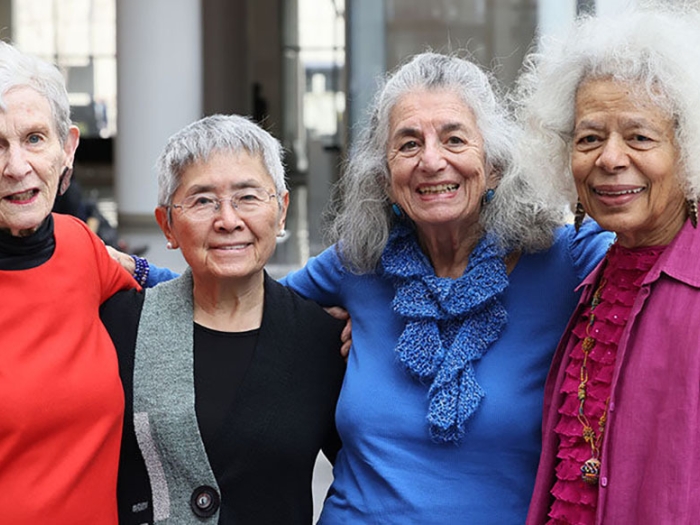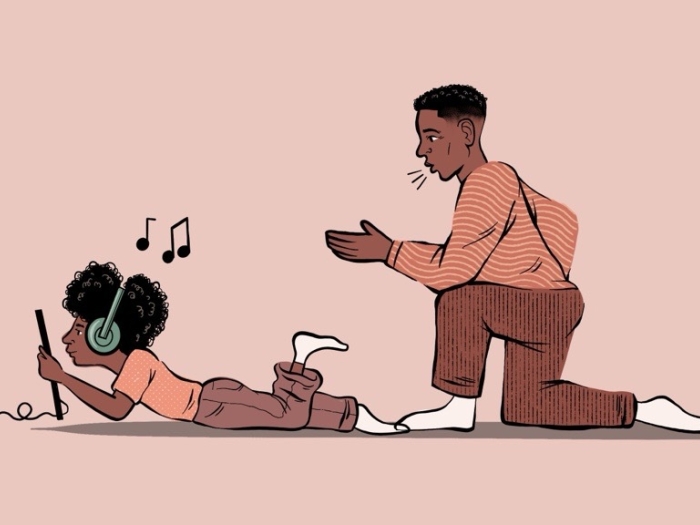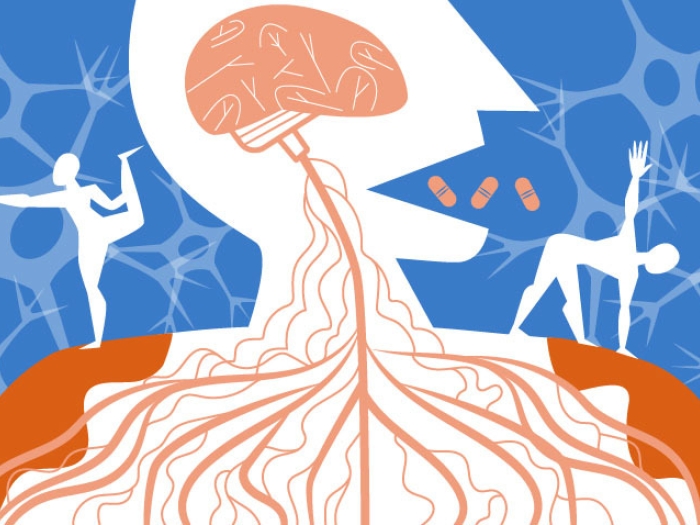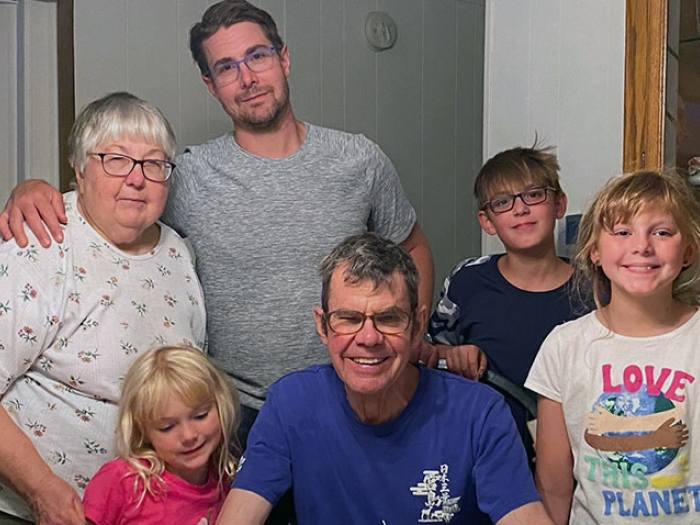A rare, highly vascular tumor put one teenager through two intense surgeries. And its genetic link, U-M doctors discovered, also put his family members at risk.
7:00 AM
Author |

The growth at the base of Bryson Farr's skull had gone undetected for months, maybe years.
It wasn't until a hot day in fall 2014, when Farr had pulled his long hair back into a ponytail during gym class, that a peer pointed out the abnormality.
MORE FROM MICHIGAN: Sign up for our weekly newsletter
"One of the kids said, 'Your neck is kind of bulging,'" recalls the 20-year-old Farr, a high school senior at the time. "I never really noticed it."
The encounter was enough for Farr's mother, Carmela Berry, to rush her son to a hospital.
Farr had been complaining of headaches and nosebleeds, she told doctors. His pediatrician had also remarked recently that the boy, then 17, was heavy for his age, which led to bloodwork and a diabetic study.
None of that prepared the family for the eventual diagnosis: a rare tumor known as a paraganglioma. With 500 to 1,600 cases annually in the United States, they can produce excess adrenaline that heightens the risk of heart attack and stroke.
Paragangliomas typically develop along major arteries and are most often found in the abdomen, bladder, chest cavity, neck, pelvis and skull region.
In Farr's case, the growth was the size of a baseball. And it was growing around his right carotid artery, one of two major vessels in the neck that supply blood to the head.
"I was alarmed," says Berry, who lives in Las Vegas with her two children.
Because of the tumor's complexity, surgeons the family consulted in their hometown didn't feel comfortable performing the operation.
The situation was stressful but not entirely foreign: Farr's father, Grand Rapids, Michigan, resident Derrick Farr, had a smaller, less-invasive paraganglioma removed in 2012 at the University of Michigan.
That led Berry and her son to board a plane for Ann Arbor in search of answers and treatment.
"I had all this anxiety," says Berry. "But I got a little more comfortable when we decided to come to Michigan."
Collaborative care
Although the family had come to a medical center well-equipped to handle the case, Bryson Farr's condition was nonetheless impressive to experts there.
SEE ALSO: Beat 'Boris': 10-Year-Old Boy Smashes His 3-D Printed Tumor
"This was probably the largest paraganglioma any of us had ever seen," says David J. Brown, M.D., an associate professor in the department of otolaryngology-head and neck surgery at the University of Michigan Medical School. "The MRI of his neck showed moderate narrowing of the right internal carotid artery, which was encased by the tumor. There were a lot of risks."
Among them: triggering a blood clot that could lead to a stroke. The growth also encased a nerve that controlled Farr's right vocal cord.
The tumor extended to Farr's skull base, which prompted concerns about removal.
Still, Michigan Medicine doctors were optimistic they could safely proceed.
Surgery in November 2014 to take out the tumor — a marathon effort that lasted more than 17 hours — involved a substantial team of more than 10 doctors and nurses, including skull base surgeon Scott McLean, M.D., Ph.D., and head and neck surgeon Kelly Malloy, M.D.
Work was completed in shifts, with vascular surgeons Dawn Coleman, M.D., and Katherine Gallagher, M.D., coming in to complete a bypass of the affected carotid artery.
"It really shows the collaborative nature of care you're going to get here," says Brown.
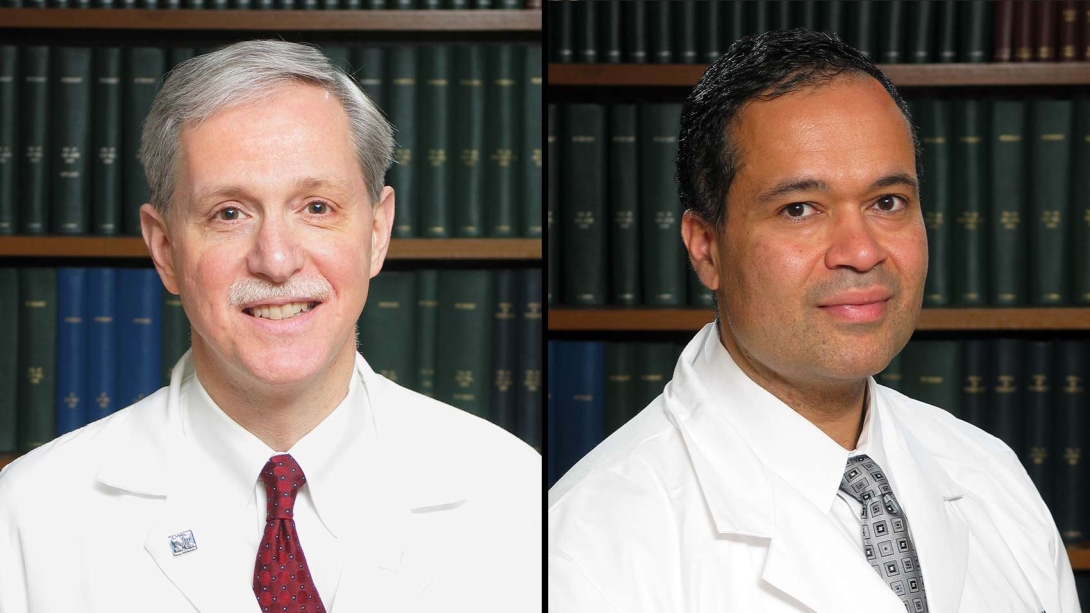
A second step
This wouldn't be the only surgery for Farr.
Because the resection had paralyzed his right vagus nerve, an unavoidable consequence, his right vocal cord was unable to move and touch the other vocal cord to facilitate typical speech — a disconnect that left his voice raspy and soft. It also made it difficult for Farr to swallow.
The solution: surgically inserting a wedge-shaped silicone implant into his larynx to reposition the paralyzed vocal cord for better voicing. The one working vocal cord could then touch the immobile one as if both were functioning properly, explains Norman D. Hogikyan, M.D.
A three-hour operation took place in June 2015.
"It took a while to get the geometry right intraoperatively," says Hogikyan, a Michigan Medicine laryngologist and professor of otolaryngology at U-M. "We had to listen to his voice in order to determine how much to reposition the vocal cord."
In an undoubtedly surreal exchange and while under local anesthesia, Farr was asked to speak while surgeons adjusted the wedge through an incision in his neck to ensure a proper fit. (A surgical drape blocked Farr's view of the action and maintained a sterile surgical field.)
Farr remembers wanting everything to be over — and being curious about the events taking place.
"That was actually pretty cool … to play a role in my own surgery," he says.
Finding his voice
For Farr, normalcy came gradually after he returned to Nevada.
Says his mother: "It took a minute to get up to speed and a little bit of time to find his voice. His voice was very low and soft, but it has improved dramatically."
SEE ALSO: Awake Brain Surgery for Epilepsy: Professor Celebrates 10 Years Later
Recovery from the health scare didn't only benefit Farr. It prompted the family one year later to have Farr's older brother, DeAndre Farr, genetically tested to determine whether he was at risk for the condition.
That hunch was well-timed: DeAndre, now 24, was found to have a paraganglioma, albeit a less serious one. It was removed at Michigan that same summer.
The family is happy to have the past behind them.
Bryson Farr, though, has taken the journey full circle. He's now in community college with plans to become a respiratory therapist — a newfound career path his health hurdle shaped.
"Michigan probably paved the way for that," he says. "I loved the experience despite everything I went through."

Explore a variety of healthcare news & stories by visiting the Health Lab home page for more articles.

Department of Communication at Michigan Medicine
Want top health & research news weekly? Sign up for Health Lab’s newsletters today!
